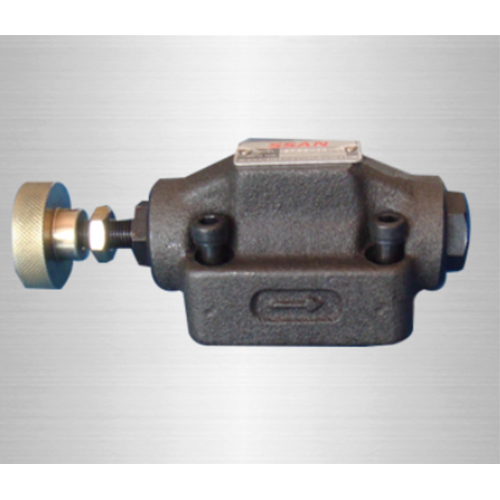



The hydraulic sequence control valve is an important hydraulic control component, mainly used to control multiple actuators (such as Hydraulic Cylinders and motors) to act in a preset sequence. The following are the core points of its product introduction:
---
**1. Product Functions**
- **Sequential Control**: Triggered by pressure or electrical signals, it ensures that the actuating elements in the Hydraulic System operate in a specific sequence (such as lifting first and then pushing, clamping first and then cutting, etc.).
- **Pressure Staging**: Automatically opens or closes when the system reaches the set pressure, enabling multi-step operations.
---
**2. Main Types**
- **Direct-acting Sequence Valve**: Simple in structure and quick in response, it is suitable for low-pressure and small-flow scenarios.
- **Pilot-operated sequence valve**: Offers better stability in high-pressure and large-flow conditions, with a wide range of pressure regulation.
- **Electro-controlled sequence valve**: Controlled by electromagnetic signals, it is highly flexible and suitable for automated systems.
---
**3. Core Features**
- **Precise Pressure Setting**: Adjustable pressure range is wide (typically 0.5 to 35 MPa), meeting the demands of various working conditions.
- **High Reliability**: Anti-contamination design, suitable for harsh environments in construction machinery, metallurgy, etc.
- **Bidirectional Flow**: Some models support bidirectional oil flow, simplifying pipeline design.
---
**4. Typical Application Scenarios**
- **Machine Tools**: Control the sequence of clamping and tool feed.
- **Injection Molding Machines**: Sequentially complete mold closing, injection, and pressure holding actions.
- **Lifting Equipment**: Ensure outriggers are fully extended before lifting the boom.
- **Automated Production Lines**: Coordinate the cooperative operation of multiple cylinders.
---
**5. Key Parameters for Selection**
- **Rated Pressure/Flow**: Match system requirements.
- **Control Method**: Internal control (self-generated pressure) or external control (external signal).
- **Connection Type**: Plate, tube, or cartridge valve.
- **Medium Compatibility**: Mineral oil, emulsion, or biodegradable hydraulic oil.
---
**6. Advantages and Precautions**
- **Advantages**: Simplifies system layout, reduces control complexity, and enhances action reliability.
- **Precautions**: Avoid overlapping pressure settings to prevent misoperation, and regularly inspect for valve core wear.
---